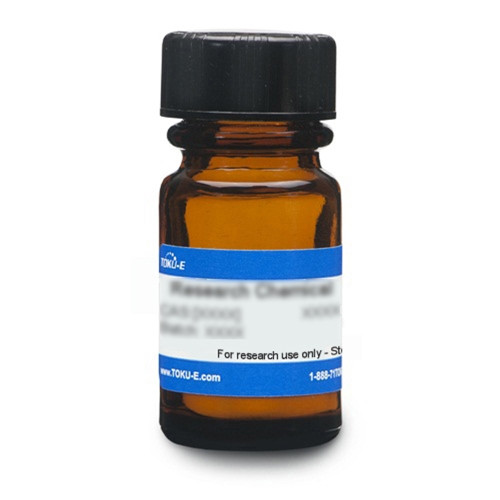Ceftazidime Hydrochloride is a non-toxic hydrochloride salt derivative of Ceftazidime, a broad-spectrum, third-generation, β-lactam cephalosporin that interferes with bacterial cell wall synthesis. Patented in 1979 by Glaxo Group, it came into commercial use in 1984. It is derived from cephaloridine. Interestingly, it can generate degradation products in aqueous solutions that are actually inhibitory to HIV-1 cell lines in vitro. Ceftazidime Hydrochloride is sparingly soluble in aqueous solution. Organic solvents are commonly used to facilitate dissolution.
We also offer:
- Ceftazidime Pentahydrate (C059)
- Ceftazidime Solubilized (C019)
- Ceftazidime, Delta-3-Isomer, EvoPure® (C121)
| Mechanism of Action | Like β-lactams, cephalosporins interfere with PBP (penicillin binding protein) activity involved in the final phase of peptidoglycan synthesis. PBP’s are enzymes which catalyze a pentaglycine crosslink between alanine and lysine residues providing additional strength to the cell wall. Without a pentaglycine crosslink, the integrity of the cell wall is severely compromised and ultimately leads to cell lysis and death. Resistance to cephalosporins is commonly due to cells containing plasmid encoded β-lactamases, however, ceftazidime is stable in the presence of β-lactamases. |
| Spectrum | Ceftazidime Hydrochloride is broad-spectrum, targeting both Gram-negative and Gram-positive bacteria, but is most effective for Gram-negative strains including Pseudomonas aeruginosa and Enterobacteriaceae (including β-lactamase positive strains). It is also used against Streptococcus pneumoniae, and S. pyogenes. |
| Microbiology Applications | Ceftazidime is commonly used in clinical in vitro microbiological antimicrobial susceptibility tests (panels, discs, and MIC strips) against Gram-negative microbial isolates. Medical microbiologists use AST results to recommend antibiotic treatment options. Representative MIC values include:
Media Supplements PALCAM Agar - PALCAM Selective Supplement ChromogenicListeria Agar - Chromogenic Listeria Selective Supplement ChromogenicListeria Agar - Chromogenic Listeria Differential Supplement |
| Eukaryotic Cell Culture Applications | Human bronchial epithelial cells from chronically infected cystic fibrosis airways were cultured and exposed to Ceftazidime in order to analyze the cytotoxicity. Even at concentrations many times the antimicrobial level, the compound was nontoxic (Randell et al, 2001). Ceftazidime present in aqueous solutions generate cefazidime degradation products (CDPs) that inhibit in vitro HIV-1 replication in cell lines (MT-2 cells transformed with HTLV-I virions, CEM-SS, H9/HTLV-IIIB NIH 1983, Molt-4 clone 8, and U937) and in primary cells (lymphocytes and macrophages from peripheral blood mononuclear cells). The exact chemical nature of the active component responsible for the anti-HIV activity is currently unknown other than it is a high molecular weight polymer (MW 8000). The inhibitory action was manifested during the early phase of the HIV-1 lifecycle (Hobi et al, 2001). |
| Molecular Formula | C22H22N6O7S2 • 2HCl |
| Solubility | Sparingly soluble in aqueous solution. Organic solvents are commonly used to facilitate dissolution. |
| References | Fischer J and Ganellin R (2006) Analogue-based Drug Discovery. John Wiley & Sons. p. 495 |







